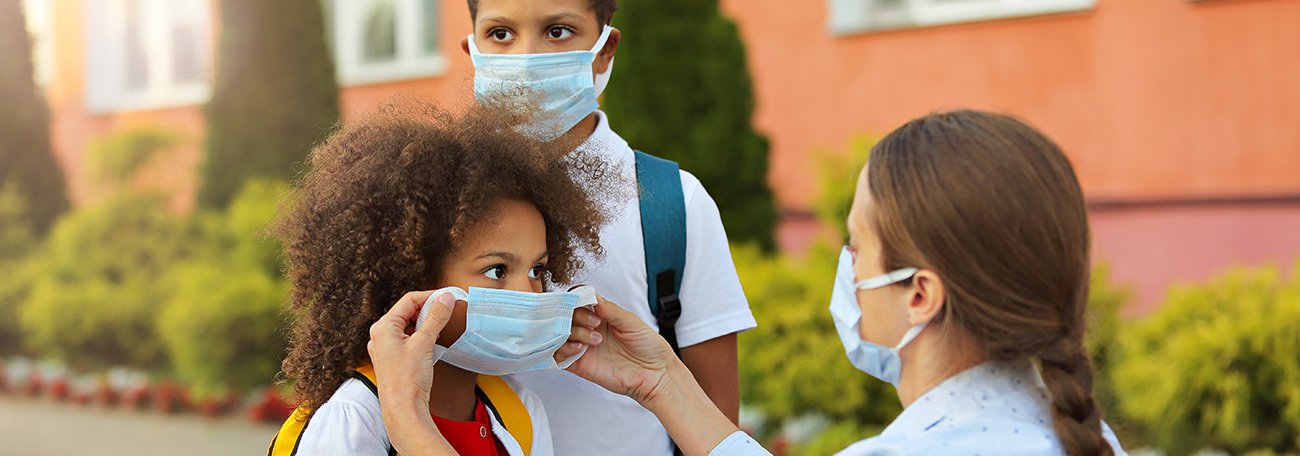Make a mask social story
ReadSocial stories are visual reminders typically used to teach children appropriate behavior. The process of creating a social story is easy. Think about the desired behavior, write short sentences that describe the behavior, and then add pictures. When possible use pictures of the child or group of children in action throughout the story. You can then make the story into a book that serves as a portable visual reminder. Copies of these books can be made for parents to help reinforce ideas at home.
Get more information on social stories and how to create them here.
Play pretend
ReadAllowing children to put masks on dolls, and stuffed animals can help normalize masks for children. Use pretend play to help your child get used to wearing the mask, by wearing them while engaging in play activities like grocery store.
Prepare for failure
ReadThis transition is going to be difficult. It will not be uncommon for children to pull down their mask to try and talk to you, or simply just take it off. If possible keep extra masks on hand for children who get upset and throw their masks on the floor, or for children who drop their masks.
Use this as a teaching opportunity.
ReadBecause masks obscure facial expressions that children use to understand their surroundings this is a wonderful opportunity to incorporate ASL into your curriculum.
You could also spend time working to help children understand the expressions that people make with the upper half of the face, and the rest of the body. Direct children to look at your face, and body movements. Explain by saying things like “look when I am happy my arms do this,” or “when I am sad my eyebrows look like this”. To help reinforce this lesson you can partner children up and have them try to convey different emotions to each other with their masks on. If you have a smaller class the same activity can be done in a mirror.
Other resources for parents
ReadHave the parents of your program help with this transition by offering them resources for at-home activities, and conversation starters. We have resources and ideas for parents here.
If your program is struggling with this transition and needs more assistance on ways to help children please reach out to our education specialists for individualized assistance by calling 716-877-6666
